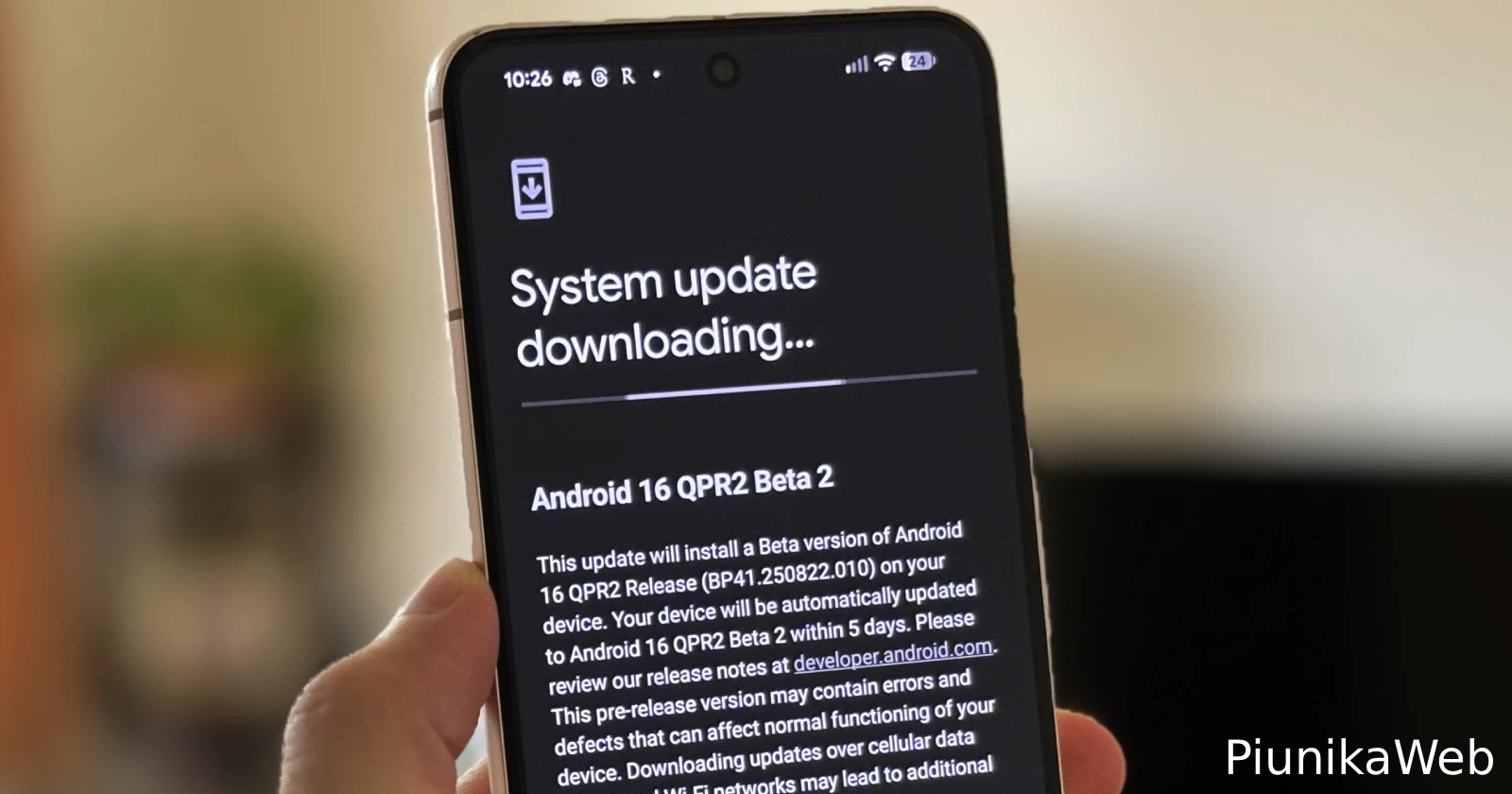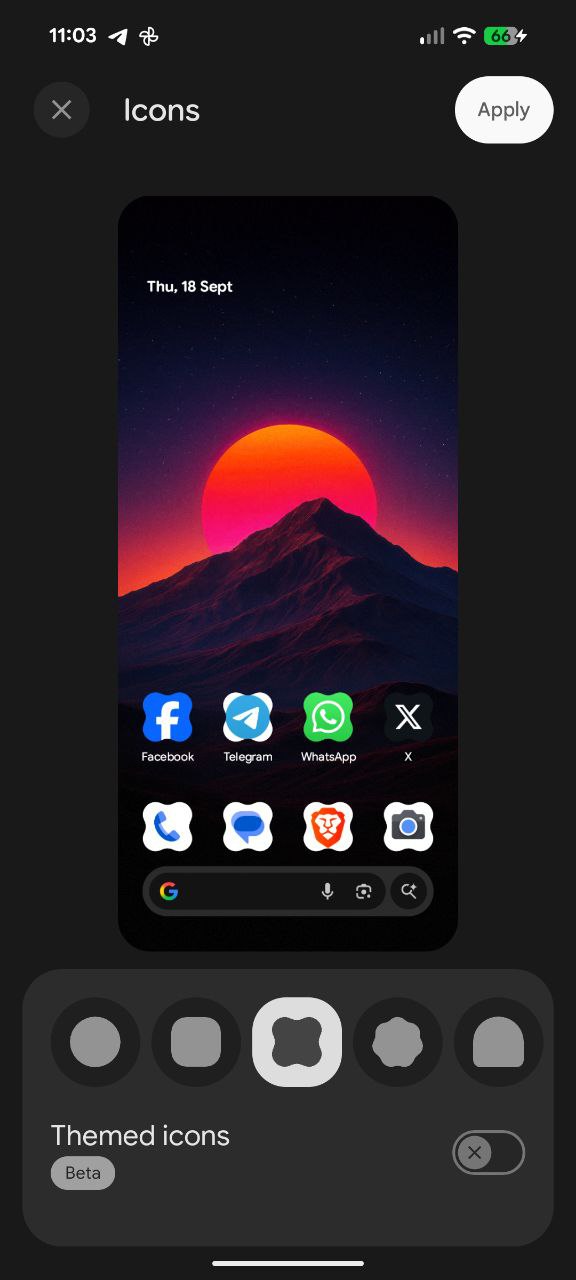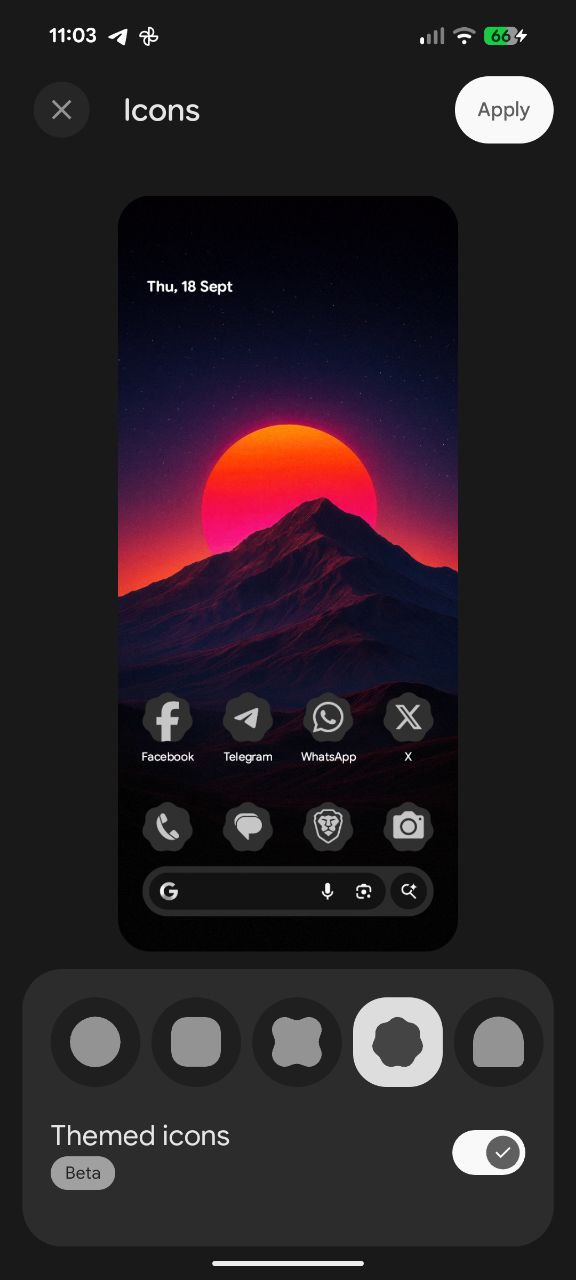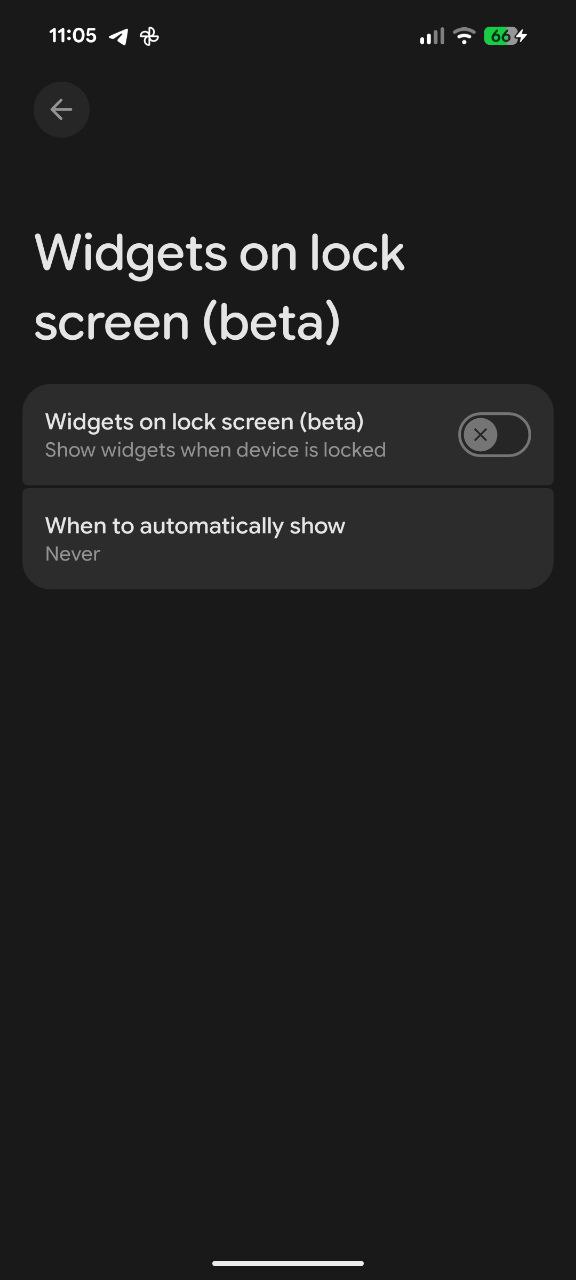Google just rolled out Android 16 QPR2 Beta 2 to Pixel users, and while it’s not packed with flashy new features like the first QPR2 beta, there are some genuinely useful additions worth getting excited about. The Android 16 Beta Program continues today with QPR2 Beta 2 for Google devices, including the Pixel 10 series.
Custom icon shapes have finally made their way into the Android beta program. You can now pick from five different options through the Wallpaper & Style app: the default circle, square, four-sided cookie, seven-sided cookie, and arch.
It’s one of those features that sounds minor but actually makes a real difference when you’re staring at your home screen dozens of times a day. The shapes apply to all app icons and folder previews, giving your phone a more personalized look. I noticed that some of the shapes just look better with app icons when “Themed icons” is enabled.
Health Connect is getting some attention too. Health Connect now automatically tracks steps using the device’s sensors. This means your phone will start counting steps by itself, without needing a separate fitness app to handle the job. If you’re someone who occasionally forgets their smartwatch or fitness tracker, this could be genuinely handy. The update also expands exercise data tracking, letting apps record weight, set index, and Rate of Perceived Exertion for workout segments.
Apart from this, I noticed something small but interesting while testing the update: there’s now a “beta” tag next to the “Widgets on lock screen” setting in Display and touch settings. Before this update, it just said “Widgets on lock screen” without any indication that it was still considered a beta feature. It’s a tiny detail that shows Google’s still fine-tuning this functionality.
There’s also an important heads-up for users who root their devices: Magisk currently doesn’t work with QPR2 Beta 2. According to a post on the Gapps Leaks Telegram channel, flashing the init_boot with Magisk leads to a bootloop, though you can restore normal boot by flashing the original init_boot back. The Magisk team will likely need to release a fix, so if you can’t live without root access, you might want to hold off on this update. However, some users in those comments report that KernelSU (KSU) still works as an alternative.
Another thing that’s broken is the media controls on the lock screen. I had music playing on YouTube Music, and the media playback controls didn’t show up. After turning to Reddit, I spotted a comment from a user who noted the same. But they found a workaround by adding a lock screen widget for YouTube Music. This, however, isn’t ideal because it’s broken across the board.
That said, the update comes in at around 440-450MB depending on your device. There don’t appear to be any other major changes beyond what’s officially documented, but I’ll keep testing and see if anything else interesting surfaces.
Full release notes:
- SMS OTP Protection: The delivery of messages containing an SMS retriever hash will be delayed for most apps for three hours to help prevent OTP hijacking. Apps can continue to use the SMS retriever API to access messages intended for them in a timely manner.
- More efficient garbage collection: The Android Runtime (ART) now includes a Generational Concurrent Mark-Compact (CMC) Garbage Collector that focuses collection efforts on newly allocated objects, which are more likely to be garbage. You can expect reduced CPU usage from garbage collection, a smoother user experience with less jank, and improved battery efficiency.
- Automatic step tracking and expanded exercise data in Health Connect: Health Connect now automatically tracks steps using the device’s sensors, and the ExerciseSegment and ExerciseSession data types have been updated so apps can record weight, set index, and Rate of Perceived Exertion for exercise segments.
- Testing developer verification: New APIs support developer verification during installation, along with a new adb command to let you force a verification outcome for testing purposes. Starting September 2026 in specific regions, Android will require apps to be registered by verified developers to be installed on certified Android devices, with an exception made for installs made through ADB.
The stable Android 16 QPR2 release is expected in December 2025, bringing these features to all Pixel users.
For now, this beta gives us a solid preview of what’s coming. The custom icon shapes alone make it tempting for users who want to personalize their devices, while the under-the-hood improvements should benefit everyone once they hit the stable release.





